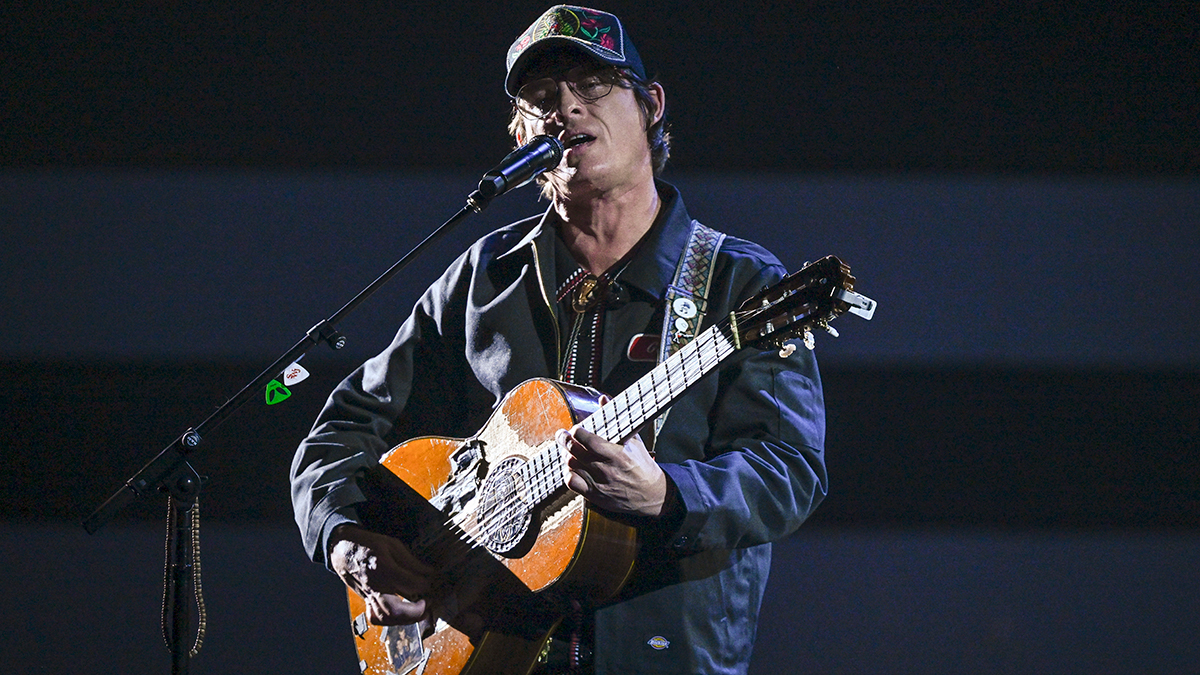Learn Prince’s soloing secrets
The soul, funk and pop icon was a brilliant multi-instrumentalist, but he was also an exceptional blues-rock guitarist with a passionate delivery and lyrical playing style

There are few popular music icons who had the level of impact on music and contemporary culture than Prince. Although most widely known for his disco, soul and funk sensibilities in his most famous releases, Prince was actually one of the most diverse and musically rich artists pop music has ever known.
His love for a wide range of genres clearly helped feed his ever increasing creative output. He loved artists like Earth Wind and Fire, Joni Mitchell, Stevie Wonder, Jimi Hendrix, Parliament Funkadelic, The Rolling Stones, The Beatles, Carlos Santana, Miles Davis, Larry Graham, James Brown and many, many others. Even in that short list, there are tons of musical influences, styles and approaches that all informed his broad and creative imagination.
From a purely guitar-centric point of view, Prince’s playing style was influenced by the likes of Hendrix, Carlos Santana, Freddie Stone, Tom Scholz and many others. You can hear the melodic sensibilities of Carlos Santana in songs like Purple Rain, while the fiery pentatonic blues-rock stylings of Hendrix come through in tracks like American Woman and his cover of Creep, by Radiohead.
His funk chops were hugely influenced by his lifelong friend Sonny T. Even though Sonny is known for his virtuosic bass playing, Prince said this of him in an interview in 1994, “I listened to everybody. My favourite of all time is Sonny T. I thought Sonny was God. Sonny was my hero. A lot of what I do on guitar, I learned from him. I’d go over to his house and we’d play records and he’d show me things on the guitar.”
While it’s fair to say that the backbone of Prince’s back catalogue broadly fits under the disco, soul, funk and pop labels, he was clearly captivated by rock and blues guitar.
Our two studies this week focus on those particular influences, with study 1 tipping the hat towards his soulful Santana influenced style of playing, while study 2 gives us a nod to his rich knowledge of blues guitar that all lent to his wonderfully lyrical, melodic and passionate style of playing.
Get the tone
Amp settings: Gain 8, Bass 6, Middle 5, Treble 6, Reverb 3
All the latest guitar news, interviews, lessons, reviews, deals and more, direct to your inbox!
Prince can be seen playing a wide variety of guitars, from custom designs to Teles, Strats, Charvels, and semi-hollowbodies. He did tend to favour guitars based on Fender-style, single-coil design, like the Hohner Tele copy. His lead tone was relatively high gain, leaning closer to a rock or even metal sound, so keep the gain high and add reverb, delay, or extra overdrive pedal should you need it.
Example 1: Study 1
This study is all about the melody and the sustain. The double-stop bends need to be played with real authority and passion.
If you have a floating bridge, make sure you also bend the second string a little bit too (it’s likely to happen anyway), so that the note doesn’t go flat as you bend the third string.
Example 2: Study 2
Much of Prince’s music has bluesy stylistics (as heard on The Ride from Crystal Ball) and this study shows how he combines Major and Minor Pentatonic.
The phrases are mostly based around shape 1, but visualise it more as Major Pentatonic with ‘blue’ notes thrown in - notably the b3 and the b7.
Phil Short is a sought-after guitarist from the UK. A stadium player, Phil is well known for his technically accomplished guitar style and has showcased his talent touring with Irish boyband Westlife. As well as touring, Phil has been a visiting lecturer at BIMM London since 2017, teaching performance, technique and improvisational skills to the next generation of guitarists. Phil is a monthly contributor for Guitar Techniques magazine, writing the blues column as well as video features on iconic rock legends.



